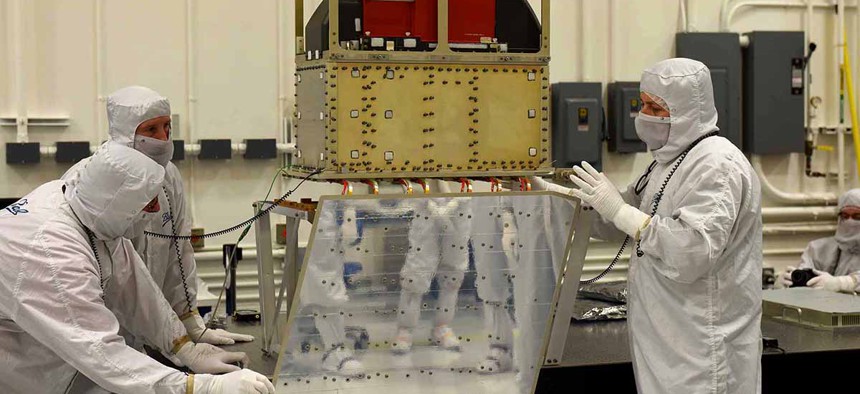NOAA’s Next-Gen Environmental Satellite One Step Closer to Launch

Ball Aerospace technicians lower the ATMS instrument onto the JPSS-1 spacecraft. NOAA/Ball Aerospace & Technologies Corp.
Next up is the environmental testing phase.
A fifth and final forecasting instrument has been integrated aboard the Joint Polar Satellite System’s first satellites – JPSS-1 – keeping the National Oceanic and Atmospheric Administration’s next-generation satellite on target for an early 2017 launch.
The instrument is called the “Advanced Technology Microwave Sounder,” developed by Ball Aerospace. The new part will be critical in improving weather events three to seven days out.
The sounder will let scientists see into cloud formations and through them in higher resolutions, ensuring more accurate measures of rainfall and snow and ice formation than current legacy sounders. The modern sounder will be particularly important during large-scale weather events like hurricanes, according to NOAA officials, because it can collect more data through more channels than legacy equipment.
“The JPSS-1 ATMS sensor will guarantee that this critical data stream remains seamlessly in place to support global forecasting in the future,” said James Yoe, the JPSS chief administrative officer, in a press release.
The sounder is the last major instrument that will fly aboard JPSS-1, allowing the satellite to prepare for environmental testing that NOAA must perform before it can launch.
JPSS-1’s timely launch is critical to ensuring NOAA’s weather forecasts remain accurate. The agency’s current crop of joint polar-orbiting satellites are aging and have been running on borrowed time for years. Both the Government Accountability Office and Congress have been keeping a close eye on NOAA’s $11.3 billion JPSS program, as well as its $10.9 billion Geostationary Operational Environmental Satellite program.



